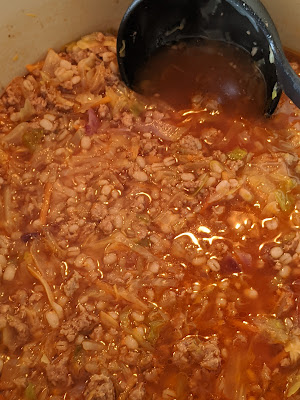A couple years ago (already?!) I started hearing about kefir
everywhere and decided to give it a shot myself. I had been brewing kombucha
for several years, and maintaining a sourdough starter for even longer, so it
seemed the next logical step in home fermentation.
Milk kefir (which is not quite the same culture as water kefir, which I also tried but wasn’t a fan of) uses a gross-looking, continually
growing mass of bacteria and yeast (which are called grains, but are not
actually grains – it’s sort of like a tiny scoby) to ferment dairy milk into a probiotic-rich product that tastes a lot like plain yogurt. You can also use milk kefir
culture to ferment coconut milk, which is EXTREMELY DELICIOUS, but I have heard
it’s not self-sustaining if you don’t do a dairy ferment every few batches to
“feed” the culture with lactose.
(The "grains" - they are admittedly gross looking but like a kombucha scoby, you don't eat them)
Milk kefir is by FAR the easiest home fermentation I’ve ever
done. It takes about a day and requires zero special equipment other than a jar
and a strainer to catch the grains. You can use it in place of buttermilk or
yogurt in recipes that call for either, which is awesome because recipes rarely
call for a full litre of buttermilk.
Plus – WAY cheaper. Personally I like using it in smoothies because I enjoy the tangy taste of yogurt in smoothies but as blending yogurt turns it
back into liquid anyway, one might as well save money and plastic containers
and use kefir instead.
I have tried and ultimately failed to adequately thicken
kefir into a more yogurt-like consistency. I’ve used gelatin and chia seeds but
it always ended up creating a bunch of extra steps that I could never quite
perfect (which is okay because now I know how to make yogurt at home and it’s
super easy – stay tuned for Part 2!).
If you have a smoothie habit and dump a lot of yogurt
directly into the blender, I would highly recommend fermenting your own kefir
instead – it’ll save you a ton of money over the long term, and you will likely
not notice a difference in taste or texture.
Here is how to “make” milk kefir:
- Obtain some milk kefir grains – I got mine on Kijiji
- Place the grains in a jar and pour in some milk
- Cover with a cloth or coffee filter and leave on the counter for about 12 hours. When you jiggle the jar and the milk appears to have solidified or has a layer of whey starting to separate, it’s done (it will re-liquify when you strain it). It should also smell pleasantly tangy like yogurt or buttermilk. If it smells rotten or spoiled something has gone wrong
- Strain out the grains and start over. Use the fermented kefir immediately or store in the fridge for a week or two
Note that if you use a metal strainer it may curdle the
kefir slightly, which is fine if you’re going to blend it up or bake but if you
are planning to drink it straight or thicken to eat like yogurt, this is not
ideal, so you will probably want to use a plastic strainer.
You can also ferment milk or coconut milk without
grains, if you have an active culture going – this is ideal if you don’t want
to have to strain the finished product. Just add a couple spoonfuls of the
finished kefir to unfermented milk or coconut milk and ferment similarly. (Don't worry - it
won’t grow new grains from scratch overnight).
If you need a break from kefir, just put the grains in some
milk in the fridge for a couple weeks. Eventually you need to feed them so they
don’t die, but I often put mine in the fridge for a couple days a week when I’m
getting too much of a backlog.
Milk kefir is fun, easy, cheap, requires almost no equipment
investment, and tastes like yogurt! If you’re new to fermentation I would
absolutely recommend it as a starter project.
...and eventually I had to graduate to yogurt making, which will be Part 2 of this post!


